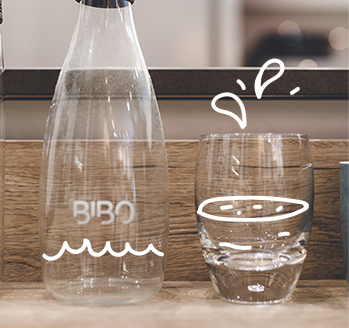Water purity is an essential aspect of public health, and there’s been a growing awareness of its importance over the past number of years. In order to understand its true importance, we want to explain how the UK’s water is treated, what safeguards are in place to keep our water healthy, and how pure drinking water promotes better public health overall.
Exploring Drinking Water Purity Standards
It’s critical that the purity of our drinking water is maintained, as it has significant and far-reaching effects on both public health and environmental sustainability. Safe drinking water allows us to prevent the spread of certain waterborne diseases, helps us avoid chemical exposure through contaminated water, and protects natural aquatic ecosystems by limiting contamination.
Drinking water purity standards in the UK are quite strict and specific, and cover a wide variety of areas, including:
- Micro-organisms
- Chemicals
- Metals
- The look and taste of the water

Our drinking water has to meet stringent standards for all of these areas, and adherence to each one is essential to ensuring that our water is safe for consumption. The establishment and enforcement of these standards are of the utmost importance in keeping us and our environment safe.
Drinking Water Quality in the UK: Standards and Assurance
Water in the UK undergoes a strict series of processes to ensure that when it reaches our taps, it’s safe for consumption. This all begins when the water is collected from its natural source, typically from a reservoir. The water will then undergo extensive treatment. Steps include:
- Screening and sedimentation to remove large particles.
- Coagulation and flocculation add chemicals to clump smaller particles together.
- Filtration to remove and remaining particles.
- Disinfection with chlorine to kill harmful microorganisms.
- pH adjustment to keep acidity within an acceptable range.
- Additional treatments like activated carbon adsorption if needed.
Next, the water is distributed through our vast network of pipes and pumping stations, all of which are monitored constantly to keep standards high. Samples of water are taken regularly to ensure standards are being met at every stage of the process.
What Is In The UK’s Tap Water?
UK tap water contains a wide variety of components, including minerals and disinfectants. It’s important to understand exactly what’s in your drinking water, and why each component is important for your health, and the health of the environment at large.

Minerals such as calcium, magnesium, sodium, potassium, iron, and manganese all exist within our drinking water. These are naturally occurring minerals and are rarely anything to be concerned about.
Disinfectants such as chlorine and chloramines are also in our drinking water. While this may sound alarming at first, these are intentionally added to kill harmful bacteria in our water. The levels of these disinfectants are highly monitored and are so low that they pose no threat to your health or the environment at large.
Water Treatment and Quality Assurance in the UK
Water treatment in the UK is a multi-step process designed to ensure that water remains safe and pure from source to tap. It all begins when the water is sourced, and subsequently enters a treatment facility.
First, the water is screened to remove large debris such as leaves and twigs. This is done using screens or bar racks, and is essential in both making the water cleaner, but also protecting more sensitive equipment in later steps from being damaged by this large debris.
Next, chemicals such as aluminium sulphate are added to the water. These chemicals are coagulants and cause fine particles suspended in the water to be clumped together so that they’re more easily removable.
The water is then allowed to settle in a large storage container, making the clumped contaminants settle at the bottom forming a layer of sludge. The settled water then passes through a variety of layers of sand, gravel, and sometimes activated carbon to filter it. This removes particles, and impurities from the water.
Disinfection is the next major step in the process, where chemicals are added to kill bacteria and pathogens that may still exist. This is a key step in ensuring that our water is truly safe for consumption.
The pH level is then adjusted to be within an allowable range before a final filtration stage occurs prior to the water being distributed through our water network.

pH Levels of UK Tap Water: Balancing Acidity and Alkalinity
pH levels in UK tap water are regulated to fall within specific limits to ensure it remains palatable, and so that it can elongate the life cycle of the UK’s general water infrastructure. The pH range for tap water in the UK falls between 6.5 and 8.5. This range ensures that contaminants and chemical imbalances are kept to a minimum, as extreme pH levels can contribute to the growth of microorganisms that are harmful to humans.
Maintaining a standard pH level is also vital in ensuring the longevity of our water infrastructure. Water with particularly low or high pH levels can lead to the rapid corrosion of the pipes that transport water to its end destination. This also makes it more likely that metals can be leached into water, further endangering anyone who drinks it.
The Framework of Drinking Water Standards in the UK
To maintain extremely high standards of water quality within the UK, there’s an expensive regulatory framework that all utilities and authorities within the water process must adhere to. This framework forms the basis for the monitoring, testing, and reporting processes that keep us safe on a day-to-day basis.
We want to continue keeping water clean, so why not get in touch with us today to explore the best water filter options available?






